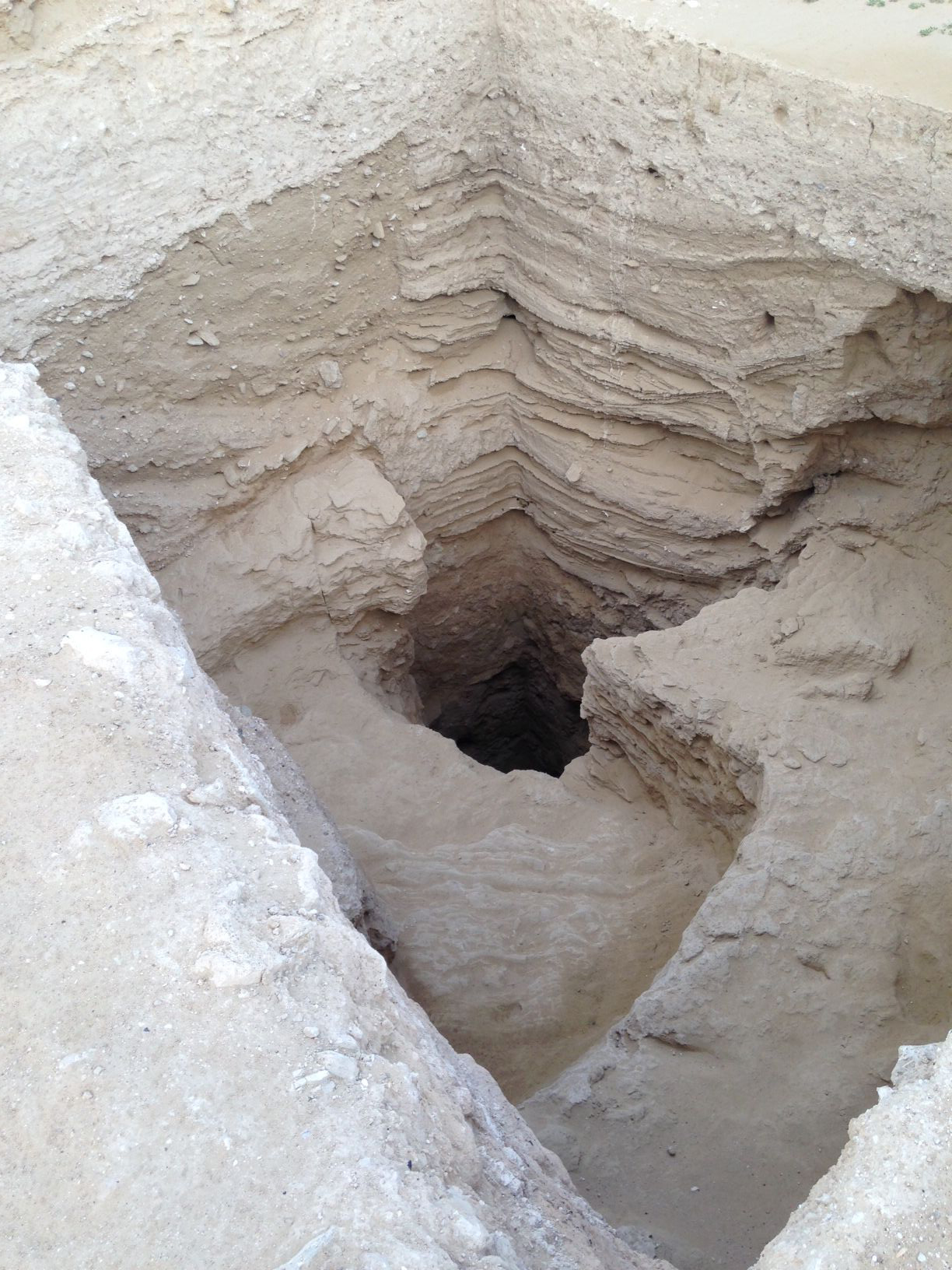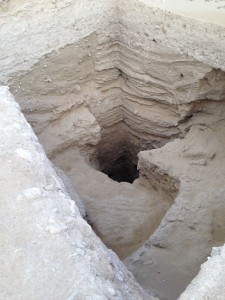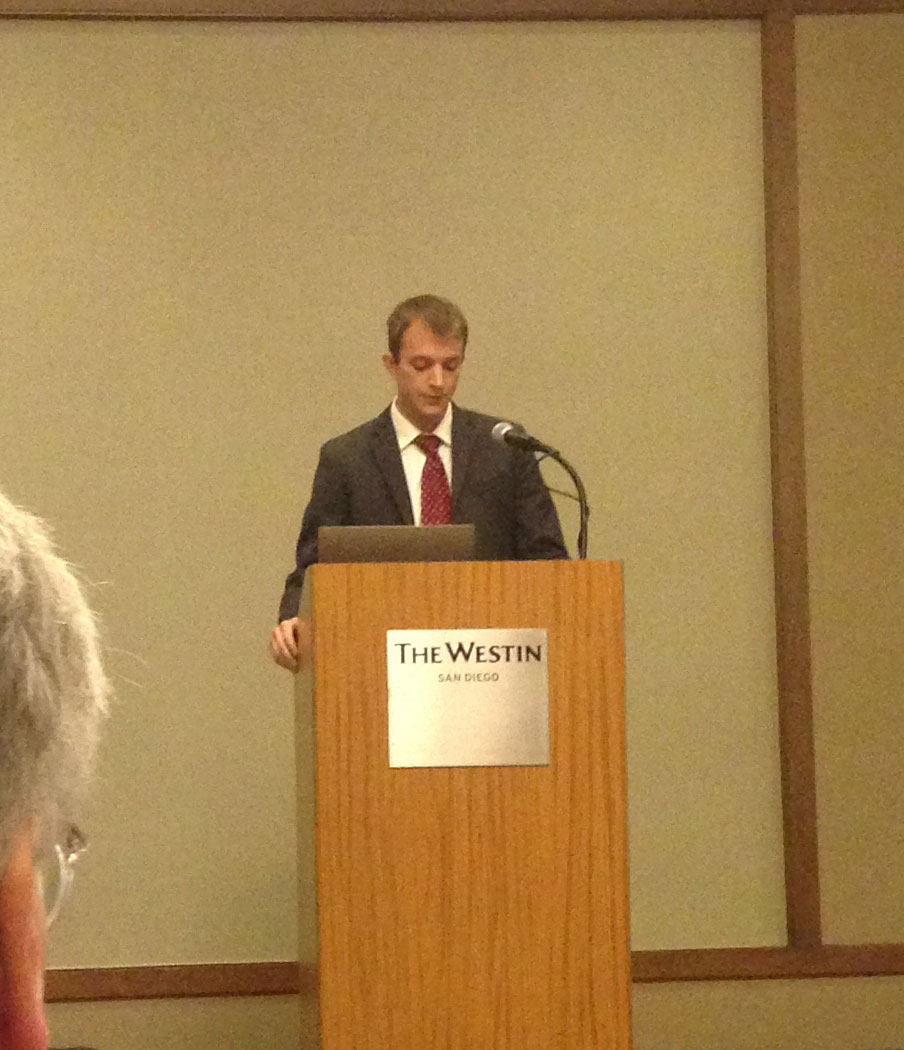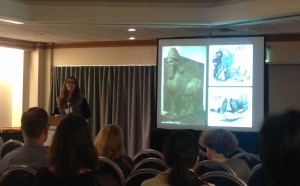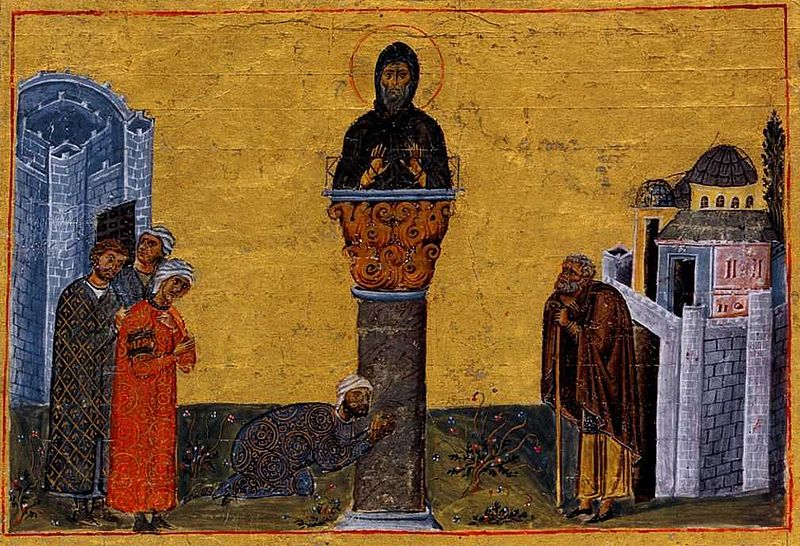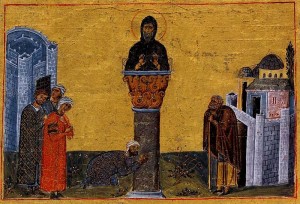There were many graduates, past and present, active in various roles at the annual meeting of the College Art Association in New York this last February; among those there were (in alphabetical order), Ben Anderson, Mary Ann Caws, Therese Dolan, Lori Felton, Marie Gaspar-Hulvat, Johanna Gosse, Jennifer Griffiths, Allison Levy, Mey-Yen Moriuchi, Marjorie Och and Marissa Vigneault. In addition David Cast (Eugenia Chase Guild Professor in the Humanities at Bryn Mawr College), spoke in a session with Tina Bizzaro and Maureen Pelta, (both of whom received their doctorates from Bryn Mawr).
Category Archives: Conferences and Presentations
Professor Peter Magee speaks at German Archaeological Institute annual plenary
Professor Magee was invited to speak at the final plenary of the German Archaeological Institute (DAI), a scientific organization within the German Foreign Ministry. Magee delivered his research to a group of scholars from the DAI and German Universities who focus on technical innovations and their social consequences in prehistory and antiquity. Magee’s talk, “The Impact of Technical Innovations in the Later Prehistory of the Persian Gulf Region,” explored innovations in water supply from about 3000 to 1000 BC.
The well seen above, which Magee excavated last winter, was used at the ancient settlement of in the United Arab Emirates; Magee discussed the technology behind this sort of well in his lecture.
Professor Lisa Saltzman (History of Art) participated in “The Art of Memory and Mourning” Symposium
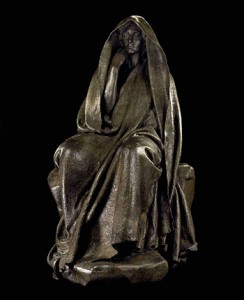
Lisa Saltzman, Professor of History of Art and Andrew W. Mellon Foundation Chair in the Humanities, participated in the symposium “The Art of Memory and Mourning,” November 14 at the Smithsonian American Art Museum.
The symposium was dedicated to art historian Cynthia J. Mills (1947–2014), former executive editor of the journal American Art and Smithsonian American Art Museum academic programs advisor, and recognizes the release of her book Beyond Grief: Sculpture and Wonder in the Gilded Age Cemetery (Smithsonian Institution Scholarly Press, 2014). It also featured talks by Miguel de Baca of Lake Forest College; Erika Doss of Notre Dame University, James Meyer of the National Gallery of Art, Jennifer Van Horn of George Mason University, and independent scholar Sarah Beetham.
The entire symposium can be viewed online, at:
Archaeology Graduate Students Present at ASOR 2014
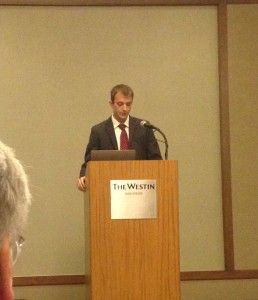
Steven Karacic and Maggie Beeler, both Ph.D candidates in Archaeology, recently presented papers at the annual meeting of the American School of Oriental Research, held in San Diego, November 19-22. Maggie’s talk was titled, “Untying the Knot: Investigating Knotted Belts and Lion Colossi at Assurnasirpal’s Northwest Palace, Nimrud (Calah).” Steven was the lead author of “The Late Bronze IIA Pottery from Goldman’s Excavations at Tarsus-Gozlukule, Turkey: the Results of Archaeometric Analysis.”
Shannon Steiner (History of Art) presents at 40th Annual Byzantine Studies Conference
Shannon Steiner, Ph.D. candidate in the History of Art, recently presented at the 40th Annual Byzantine Studies Conference, held at Simon Fraser University, Vancouver BC, from November 6-9, 2014.
She was invited to participate in the session “Two Columns and a Stylite,” organized by Dr. Robert G. Ousterhout of the University of Pennsylvania. Her paper, titled “Pillars of the Community: Stylites as Architecture,” explored representations of stylite saints (early christian monks who lived their lives on top of columns) that either showed the saints with architectural features or that were executed directly on architectural elements like columns or piers. She contextualized these images in the common Byzantine understanding of architecture as a metaphor for community and argued that stylite saints purposefully merged their bodies with architecture in order to become monumental rallying points for new Christian communities.
Above is an image of one of the painted miniatures from the Menologion of Basil II.
